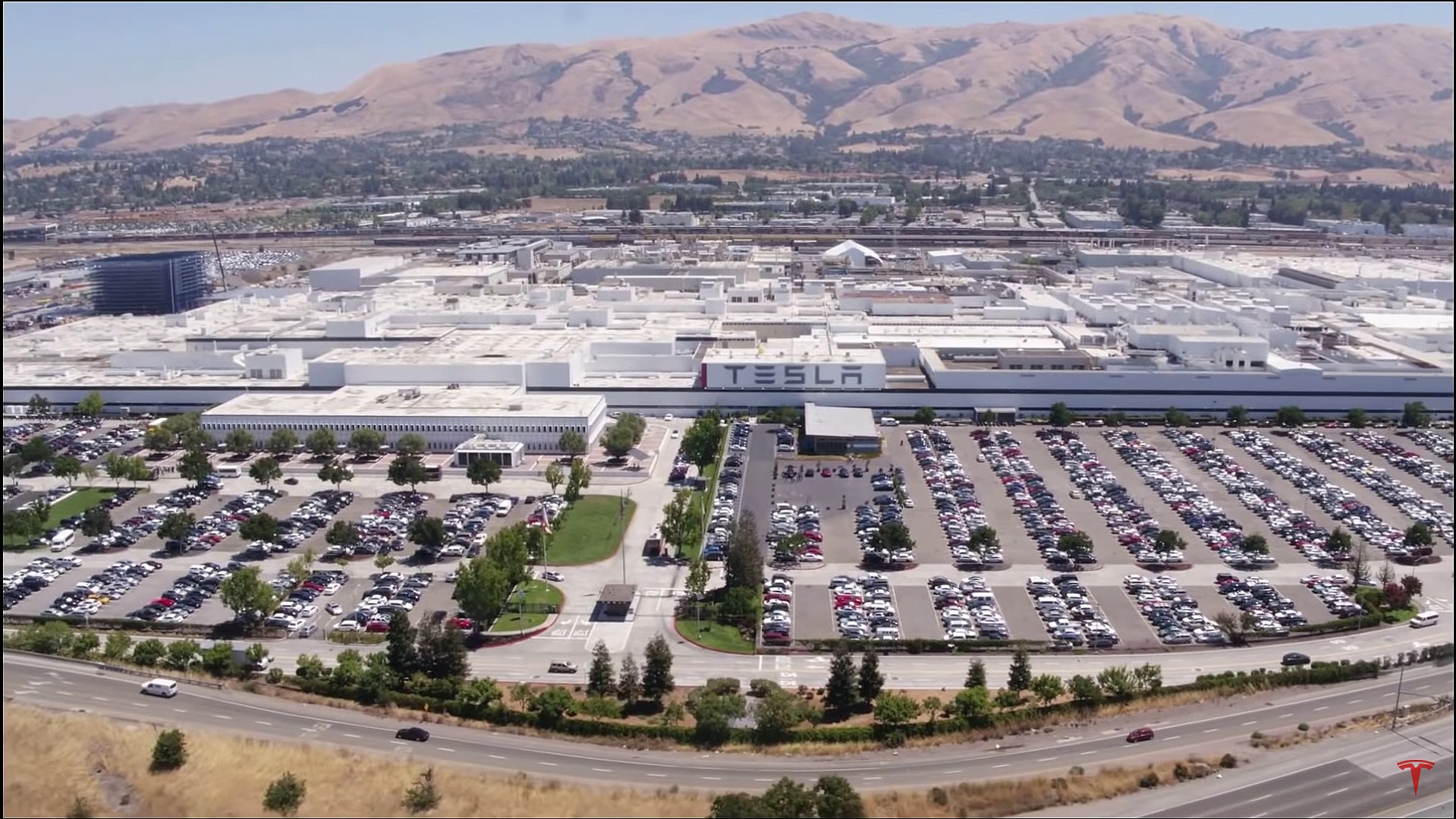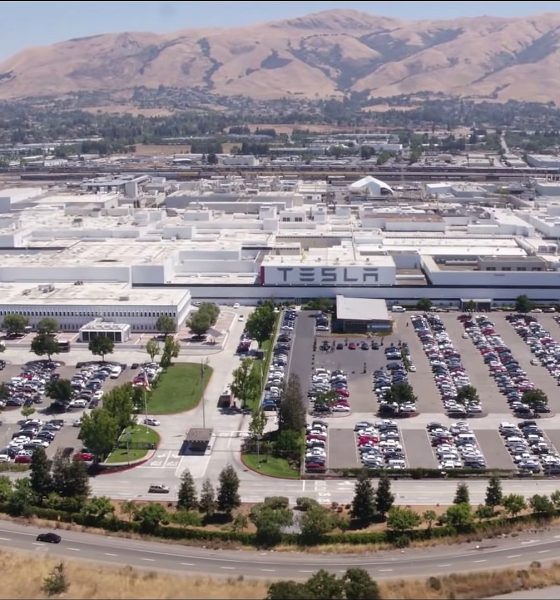

Investor's Corner
Tesla (TSLA) spikes after leaked email from Elon Musk hints at 500k deliveries
Tesla (NASDAQ: TSLA) spiked after a leaked email from CEO Elon Musk said it “would be exciting if we can exceed” half a million vehicle deliveries in 2020.
At 12:14 PM EST, TSLA stock was trading at $420.52. After a Tweet from @DeltaOne indicated that Elon Musk had sent an email to Tesla employees saying that if the company’s goal of delivering half a million cars could be exceeded, it would be exciting.
By the time the Tweet caught traction, the stock had spiked to over $428.
It undoubtedly would establish 2020 as a groundbreaking year for the electric automaker. Despite having both of its production plants closed due to the pandemic in 2020, Tesla would still accomplish the 500,000 delivery goal set for itself at the beginning of the year.
ELON MUSK IN MAIL TO TESLA EMPLOYEES SAYS "WOULD BE EXCITING IF WE CAN EXCEED" 500,000 ANNUAL PRODUCTION IN 2020$TSLA
— *Walter Bloomberg (@DeItaone) October 7, 2020
For perspective, Tesla delivered between 367,000 and 368,000 cars in 2019. During the year, it only had one fully-operational production facility, which is in Fremont, California.
Tesla officially started delivering cars from the Giga Shanghai production plant in China in January. The facility is currently producing the Model 3 sedan at a rate of about 200,000 vehicles annually. With Tesla’s 2019 production figures from Fremont, which have expanded due to the Model Y’s introduction, Giga Shanghai’s output should put the automaker well over its 500,000 car goal.
However, things rarely go according to plan. Shanghai was completely closed for several weeks in February, and Fremont was shut down for nearly a month and a half. The closings put a significant dent in Tesla’s Q2 numbers, and the company only delivered 90,891 cars. To keep pace with the yearly goal, Tesla needs to keep an average of 125,000 cars per quarter.
After a record performance in Q3 with 145,036 units produced and 139,300 cars delivered, Tesla is on its way to achieving its goal. However, the company will need to deliver around 190,000 cars in Q4 to achieve the 500,000 vehicle threshold.
The fourth quarter has been Tesla’s strongest period in past years. In 2019, Tesla delivered 112,095 cars to owners compared to the 95,356 and 97,186 in the second and third quarters, respectively.
Whether Tesla reaches its 500,000 car goal for the year comes down to a couple of things: Manufacturing efficiency and demand. The company has plenty of demand, and one of its main focuses has been to increase manufacturing accuracy and efficiency. Musk has been vocal about the challenges that have come from mass-producing cars, but Tesla has managed to overcome the adversity through experience.
At the time of writing, TSLA was trading at $429.08, up 3.66% on the day.
Disclaimer: Joey Klender is a TSLA Shareholder.

Investor's Corner
Tesla stock closes at all-time high on heels of Robotaxi progress

Tesla stock (NASDAQ: TSLA) closed at an all-time high on Tuesday, jumping over 3 percent during the day and finishing at $489.88.
The price beats the previous record close, which was $479.86.
Shares have had a crazy year, dipping more than 40 percent from the start of the year. The stock then started to recover once again around late April, when its price started to climb back up from the low $200 level.
This week, Tesla started to climb toward its highest levels ever, as it was revealed on Sunday that the company was testing driverless Robotaxis in Austin. The spike in value pushed the company’s valuation to $1.63 trillion.
Tesla Robotaxi goes driverless as Musk confirms Safety Monitor removal testing
It is the seventh-most valuable company on the market currently, trailing Nvidia, Apple, Alphabet (Google), Microsoft, Amazon, and Meta.
Shares closed up $14.57 today, up over 3 percent.
The stock has gone through a lot this year, as previously mentioned. Shares tumbled in Q1 due to CEO Elon Musk’s involvement with the Department of Government Efficiency (DOGE), which pulled his attention away from his companies and left a major overhang on their valuations.
However, things started to rebound halfway through the year, and as the government started to phase out the $7,500 tax credit, demand spiked as consumers tried to take advantage of it.
Q3 deliveries were the highest in company history, and Tesla responded to the loss of the tax credit with the launch of the Model 3 and Model Y Standard.
Additionally, analysts have announced high expectations this week for the company on Wall Street as Robotaxi continues to be the focus. With autonomy within Tesla’s sights, things are moving in the direction of Robotaxi being a major catalyst for growth on the Street in the coming year.
Elon Musk
Tesla needs to come through on this one Robotaxi metric, analyst says
“We think the key focus from here will be how fast Tesla can scale driverless operations (including if Tesla’s approach to software/hardware allows it to scale significantly faster than competitors, as the company has argued), and on profitability.”

Tesla needs to come through on this one Robotaxi metric, Mark Delaney of Goldman Sachs says.
Tesla is in the process of rolling out its Robotaxi platform to areas outside of Austin and the California Bay Area. It has plans to launch in five additional cities, including Houston, Dallas, Miami, Las Vegas, and Phoenix.
However, the company’s expansion is not what the focus needs to be, according to Delaney. It’s the speed of deployment.
The analyst said:
“We think the key focus from here will be how fast Tesla can scale driverless operations (including if Tesla’s approach to software/hardware allows it to scale significantly faster than competitors, as the company has argued), and on profitability.”
Profitability will come as the Robotaxi fleet expands. Making that money will be dependent on when Tesla can initiate rides in more areas, giving more customers access to the program.
There are some additional things that the company needs to make happen ahead of the major Robotaxi expansion, one of those things is launching driverless rides in Austin, the first city in which it launched the program.
This week, Tesla started testing driverless Robotaxi rides in Austin, as two different Model Y units were spotted with no occupants, a huge step in the company’s plans for the ride-sharing platform.
Tesla Robotaxi goes driverless as Musk confirms Safety Monitor removal testing
CEO Elon Musk has been hoping to remove Safety Monitors from Robotaxis in Austin for several months, first mentioning the plan to have them out by the end of 2025 in September. He confirmed on Sunday that Tesla had officially removed vehicle occupants and started testing truly unsupervised rides.
Although Safety Monitors in Austin have been sitting in the passenger’s seat, they have still had the ability to override things in case of an emergency. After all, the ultimate goal was safety and avoiding any accidents or injuries.
Goldman Sachs reiterated its ‘Neutral’ rating and its $400 price target. Delaney said, “Tesla is making progress with its autonomous technology,” and recent developments make it evident that this is true.
Investor's Corner
Tesla gets bold Robotaxi prediction from Wall Street firm
Last week, Andrew Percoco took over Tesla analysis for Morgan Stanley from Adam Jonas, who covered the stock for years. Percoco seems to be less optimistic and bullish on Tesla shares, while still being fair and balanced in his analysis.

Tesla (NASDAQ: TSLA) received a bold Robotaxi prediction from Morgan Stanley, which anticipates a dramatic increase in the size of the company’s autonomous ride-hailing suite in the coming years.
Last week, Andrew Percoco took over Tesla analysis for Morgan Stanley from Adam Jonas, who covered the stock for years. Percoco seems to be less optimistic and bullish on Tesla shares, while still being fair and balanced in his analysis.
Percoco dug into the Robotaxi fleet and its expansion in the coming years in his latest note, released on Tuesday. The firm expects Tesla to increase the Robotaxi fleet size to 1,000 vehicles in 2026. However, that’s small-scale compared to what they expect from Tesla in a decade.
Tesla expands Robotaxi app access once again, this time on a global scale
By 2035, Morgan Stanley believes there will be one million Robotaxis on the road across multiple cities, a major jump and a considerable fleet size. We assume this means the fleet of vehicles Tesla will operate internally, and not including passenger-owned vehicles that could be added through software updates.
He also listed three specific catalysts that investors should pay attention to, as these will represent the company being on track to achieve its Robotaxi dreams:
- Opening Robotaxi to the public without a Safety Monitor. Timing is unclear, but it appears that Tesla is getting closer by the day.
- Improvement in safety metrics without the Safety Monitor. Tesla’s ability to improve its safety metrics as it scales miles driven without the Safety Monitor is imperative as it looks to scale in new states and cities in 2026.
- Cybercab start of production, targeted for April 2026. Tesla’s Cybercab is a purpose-built vehicle (no steering wheel or pedals, only two seats) that is expected to be produced through its state-of-the-art unboxed manufacturing process, offering further cost reductions and thus accelerating adoption over time.
Robotaxi stands to be one of Tesla’s most significant revenue contributors, especially as the company plans to continue expanding its ride-hailing service across the world in the coming years.
Its current deployment strategy is controlled and conservative to avoid any drastic and potentially program-ruining incidents.
So far, the program, which is active in Austin and the California Bay Area, has been widely successful.








